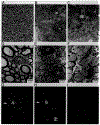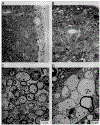Do Antibodies Stimulate Myelin Repair in Multiple Sclerosis?
- PMID: 31118550
- PMCID: PMC6527372
- DOI: 10.1177/107385849900500104
Do Antibodies Stimulate Myelin Repair in Multiple Sclerosis?
Abstract
One of the major goals in the study of multiple sclerosis (MS) is to identify a beneficial therapeutic intervention that mimics the intrinsic reparative process and results in long-term clinical improvement. As yet, the therapeutic strategies tested in MS have failed to accomplish this task. However, one potential therapy that has shown some promise in rodent models of demyelination involves the administration of antibodies. Studies in various models of demyelination (virus-induced, autoimmune, and toxic) indicate that a subset of autoantibodies with reactivity to CNS antigens promote remyelination. We have identified a prototypic germline IgMk monoclonal antibody, designated SCH 94.03, with reactivity to a surface antigen on oligodendrocytes that promotes CNS remyelination. This antibody has the phenotypic features of polyreactive physiological natural autoantibodies. Additionally, treatment of MS patients with intravenous immunoglobulin, which contains these natural autoantibodies, may be efficacious in a subset of patients. We propose three mechanisms (direct stimulation of oligodendrocytes, immunomodulation, and opsonization of debris) by which polyreactive natural autoantibodies directed against CNS antigen may promote remyelination. Remyelination has the potential to not only improve conduction velocity but also may protect axons from injury and improve neurological function.
Keywords: Autoantibodies; Oligodendrocytes; Remyelination; Theiler’s virus.
Figures




References
-
- Lucchinetti CF, Rodriguez M. The controversy surrounding the pathogenesis of the multiple sclerosis lesion. Mayo Clin Proc 1997;72:665–678. - PubMed
-
- Gilbert JJ, Sadler M. Unsuspected multiple sclerosis. Arch Neurol 1983;40:533–536. - PubMed
-
- Mackay RP, Hirano A. Forms of benign multiple sclerosis: Report of two “clinically silent” cases discovered at autopsy. Arch Neurol 1967;17:588–600. - PubMed
-
- Rodriguez M, Scheithauer B. Ultrastructure of multiple sclerosis. Ultrastruct Pathol 1994;18:3–13. - PubMed
Grants and funding
LinkOut - more resources
Full Text Sources
Other Literature Sources
Research Materials
Miscellaneous

